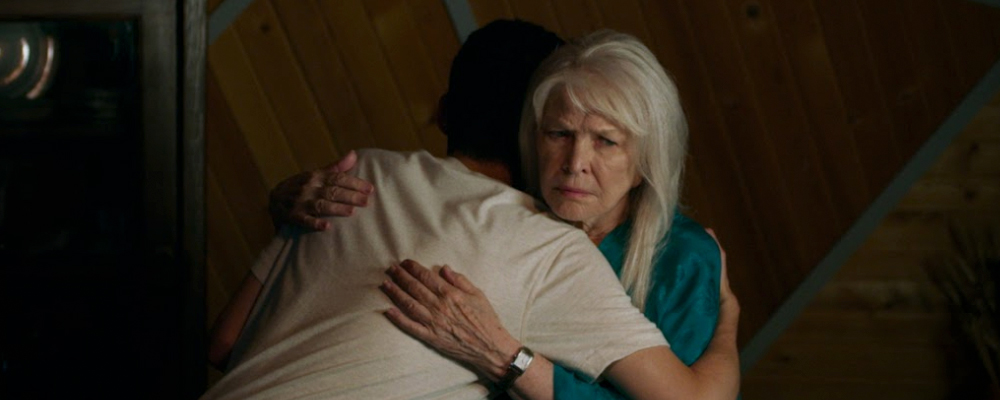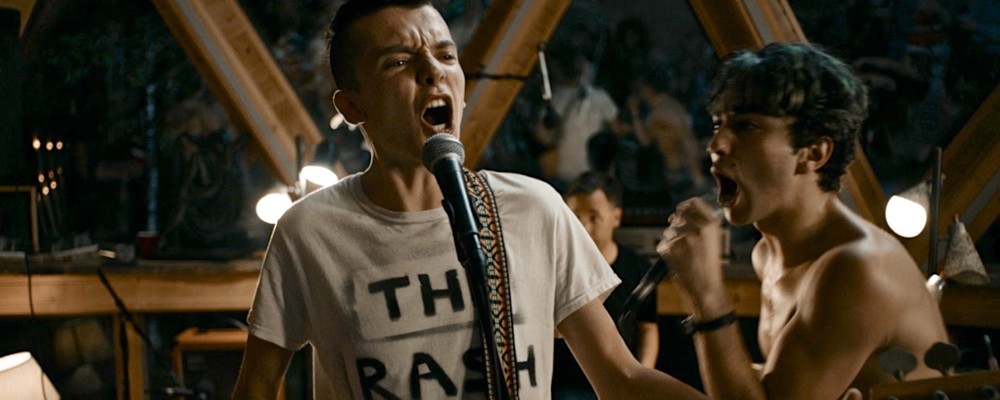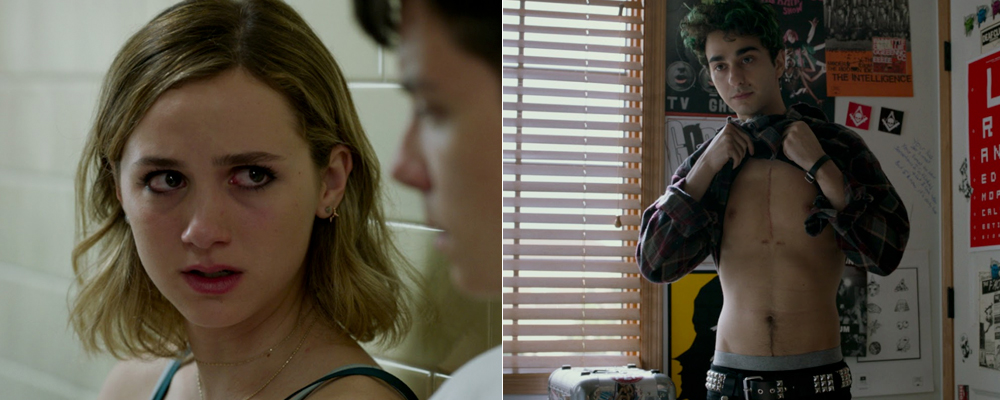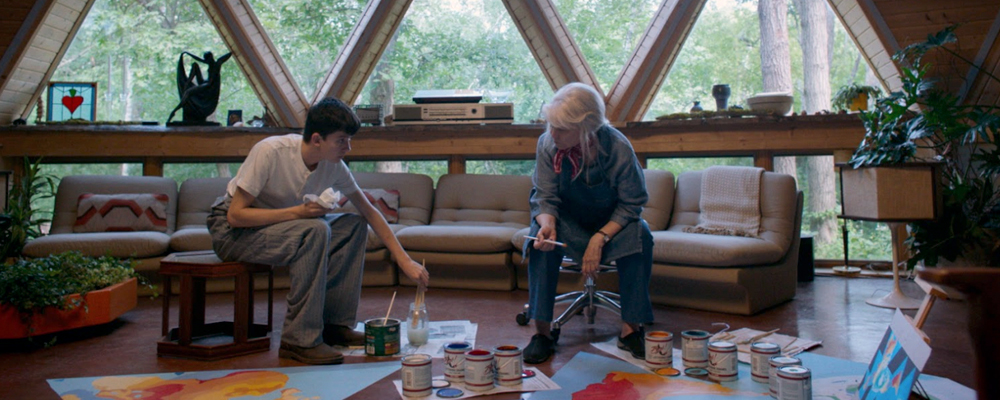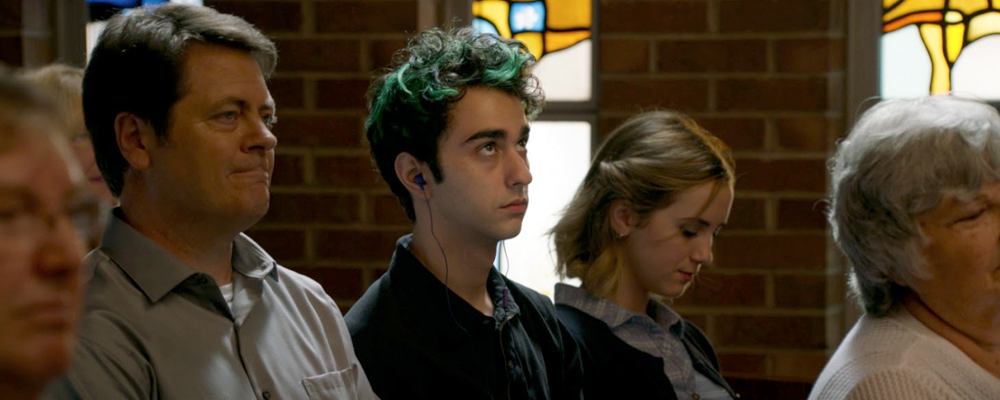Director Peter Livolsi’s ‘The House of Tomorrow’ Is a Unique Coming of Age Story
Aaron Berke
“The House of Tomorrow” is about a dome. The dome represents both an ideology and a place of upbringing for a young boy named Sebastian Pendergast (Asa Butterfield). Sebastian grows up in a Geodesic dome, the type designed by Buckminster Fuller, a real-life inventor who created the domes as energy-efficient homes of the future. In the fictional world of “The House of Tomorrow,” Fuller formed a special relationship with Josephine Pendergast (Ellen Burstyn), who now homeschools Sebastian (her grandson) with the desire to impart Fuller’s way of life on the impressionable young teenager. But as with any coming of age story, Sebastian has his own journey to take. For Sebastian, the dome has become a box.
“The House of Tomorrow” was written and directed by Peter Livolsi, who adapted the story from a novel by Peter Bognanni. In an interview with Entertainment Voice, Livolsi explained how the book compelled him both as a tale of a real man whose story reads like fiction, and the tale of a fictional boy whose journey comes vividly to life. ”Reading the book, that was kind of a primer for Buckminster Fuller as well as being a coming of age story,” Livolsi said thoughtfully. “It was just an introduction to this person who seemed like he could almost be fictional and was really fascinating and eclectic. The thing that compelled me beyond that was the relationship between the characters and the story.”
Sebastian’s journey takes shape when another boy his age, Jared Whitcomb, (Alex Wolff) visits the dome along with his father, Alan (Nick Offerman). Sebastian gives tours of the dome regularly, according to the guidance of nana Josephine. But Alan, sensing Sebastian’s sheltered nature, invites him to come and spend time with Jared at their home. Jared is much more outgoing than Sebastian but has a crippling ailment of his own in the form of a rare heart condition. Through their mutual ailments, Jared and Sebastian form the kind of bond that, according to Livolsi, is the perfect foment for heartfelt collaboration. “On the surface they’re kind of opposites,” said Livolsi. “Jared is very outspoken and… he seems very sophisticated compared to Sebastian and Sebastian seems very naïve. And I think the more you get to know Jared, the more you realize he’s very much a scared, naïve kid in his own way. and Sebastian… [is] brave in some ways you wouldn’t expect. That gets revealed as their friendship grows.”
Jared and Sebastian’s bond grows from an emotional one to a musical one. Jared begins teaching Sebastian how to play guitar, with the hopes of forming their own band and playing a show for Jared’s high school friends. Livolsi notes how the creative process naturally deepens the bonds of friendship. “When you make a film, or you start a band, or you do some sort of collaborative, artistic endeavor, you often find yourself working with people who, outside that project, you might not have a lot in common with,” Livolsi mused. “But you have something under the surface that does attract you to that other person and you both have a need to say something or create something… And in that process, I feel like [Jared and Sebastian] do both benefit from each other’s different outlooks. Even though they have stuff in common they do have very different views on the world. How they wanna be and who they wanna be. That sort of rubs off on each other.”
Over the course of the film, Sebastian gravitates more toward Jared, spending more and more time with him and away from the dome. Sebastian keeps his guitar-playing activities secret from nana, who he knows would not approve. Nana herself becomes symbolic of the kind of parent who has the best intentions for her child (or grandchild), but somewhere along the way loses the capacity to let go. Buckminster Fuller created the Geodesic dome as a form of individual expression. He sought to live an authentic life free of society’s standards. But for nana, the dome ironically has become a dogmatic ideology in which she desperately seeks to keep Sebastian insulated. “I feel like nana’s character is doing what she thinks is right,” said Livolsi. “She wanted to teach [Sebastian] that you just need to do your own thinking, and I think by doing that she actually prevented him from doing his own thinking… When you get to that age, 16 or 17, you start to realize that your parents are just imparting their version of how the world works on you, but it’s not necessarily the only way the world works.”
Livolsi described how the dome comes to represent its own symbolic ideology. It begins as a direct metaphor for isolation. But as the movie progresses, the dome evolves as a symbol of radical rebellion. Which, cyclically, was Buckminster Fuller’s original intention. “Part of [Sebastian’s and Jared’s] journey is them figuring out how they want their world to work and I think that the dome is Bucky’s idea of how the world would work,” Livolsi revealed. “But at the end of the day the thing he believed above all else was that people have to do their own thinking, and that even if you love Buckminster Fuller, you shouldn’t just blindly listen to what he has to say, you should question things and you should make your own path. I think that ultimately when Sebastian does that, that’s when he’s truly living by Bucky’s words.”
For Sebastian and Jared, their path ultimately leads to a renegade performance in the dome itself. Jared and Sebastian christen themselves “The Rash.” They take their guitars and their microphones, plant themselves in defiance of their respective parents, and play a show for all the other kids to see. Jared risks his heart condition. Sebastian risks his nana’s wrath. But neither of them cares. They play their show in the center of the dome, and in so doing, break down its walls. They transform the dome from a dogmatic prison to an open plane of spiritual vindication.
“[The performance] has Sebastian rebelling against everything he stood for at the beginning of the film, which is that this dome is this hallowed place, this church of Bucky Fuller, and he’s basically having a huge party and destroying it,” Livolsi reflected. “And then you have Jared who’s been told you cannot do this, you cannot play these shows because you could be pushing yourself too far and risking [your] life to do it. But I think they’ve both reached a point where they’re realizing they’d rather take on these risks than continue the way they had been; [Jared] in his room by himself playing music, and Sebastian at the dome with his grandmother. And the irony of course is that this is the most action the dome has ever seen in one day.”
For Jared and Sebastian, the climactic musical performance is the perfect symbol of breaking out of their own personal domes. In the scene, the kids in the audience have a myriad of different reactions. But the experience of the audience doesn’t matter. Livolsi notes that, in the end, it’s not about the strength of the music Sebastian and Jared play. It’s about the personal catharsis both characters experience. “We’re getting to be inside their heads and experiencing [the music] through them and then every so often we’re… seeing the reality of the kids [in the audience] who are kind of like ‘eh ok I can bop my head to this…’ But next week, I don’t think they’re gonna be talking about The Rash, and that’s okay to me,” Livolsi explained. “This journey is about these guys and what they got out of it… Whether or not Sebastian plays music 10 years after the end credits role, who knows. But it’s a thing that helps him get to discovering who he is.”
That’s what the dome is ultimately all about; discovering who you are. “The House of Tomorrow” encases a coming of age story in the wonderfully weird concept of the geodesic dome. The film uses the dome to extrapolate the story of two young men taking their first steps down their own paths. Sebastian shows this to his nana, just like Jared shows it to his father. The best friends prove to Josephine and Alan that domes are not about confinement, they’re about freedom. It’s exactly what Buckminster Fuller wanted all along.
“The House of Tomorrow” opens April 27 in select cities.


